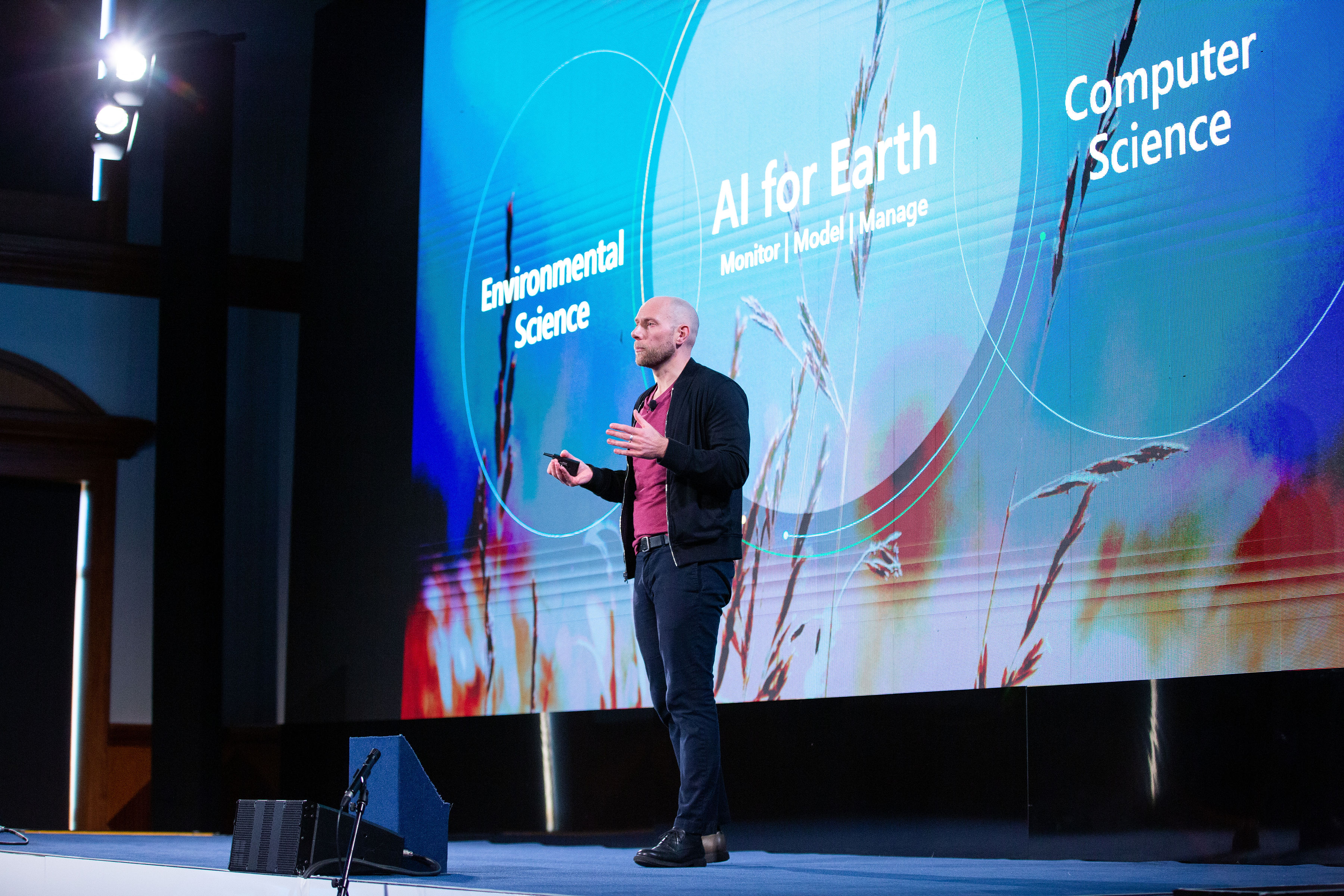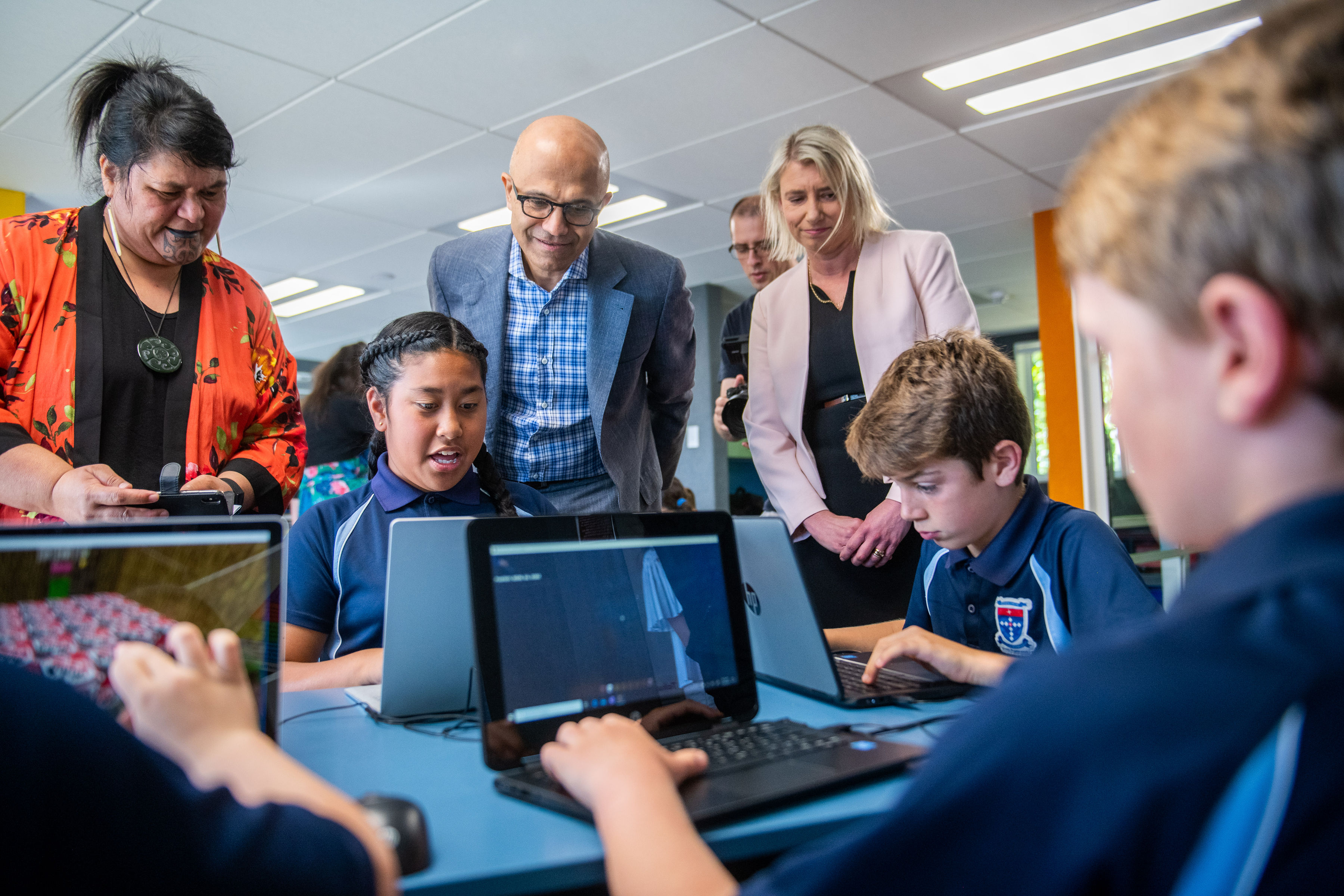When Microsoft CEO Satya Nadella visited New Zealand three years ago, it was an event on the tech calendar. Friday’s Translator announcement made his latest visit a cultural milestone.
More than 1000 industry leaders and media filled the room at Auckland’s Eden Park where Satya announced the addition of te reo Māori to Microsoft Translator, alongside the 60 languages already supported by the free application. The move will enable anyone around the world to translate text to and from te reo Māori.
At a time when just 3 per cent of Kiwis speak te reo Māori, yet Prime Minister Jacinda Ardern is calling for 1 million additional speakers by 2040, it’s crucial that people have the tools to engage with each other in te reo Māori in their everyday lives.
UNESCO predicts that between 50 and 90 percent of endangered languages will disappear by the next century. When the world loses a language, we all lose an important piece of human history, and a community loses its ability to connect and communicate with its past. That’s what lies behind Microsoft’s latest AI for Good initiative.
Preservation and guardianship link Satya’s two New Zealand visits. Three years ago, Satya received a traditional welcome (pōwhiri) from indigenous tribe (iwi), Ngāti Whātua Ōrākei. During the welcome, cultural leader, Te Aroha Morehu, articulated the need to balance growth with guardianship. Words which inspired Satya to share Te Aroha’s speech at Microsoft’s annual conference, Ready, reflecting that this philosophy runs like a current through Microsoft.
And guardianship remained a central theme of Satya’s visit this week. “This has been a 15-year journey for people in our team …. working with the community,” he said, presenting the Microsoft Translator project to the Envision Forum crowd at Eden Park. “It’s not about … one neural model we built and trained. It’s about how do you make it such that it can be part of what is a living language going forward that is available, in fact, to every developer and the community so that they can customize it, they can build on it.”
At Envision, Satya was joined by Microsoft’s Chief Environmental Officer, Lucas Joppa, who spoke about the company’s global commitment to protecting our water, creating less carbon and promoting innovation to support our environment via the AI for Earth program.
AI grants are awarded to organisations using artificial intelligence in ways that preserve and restore our planet’s waterways, climate and biodiversity and spur sustainable agricultural methods. Lucas used his keynote to announce that New Zealand’s own National Institute of Water and Atmospheric Research (NIWA) is one such organisation, as revealed in a “chilling” video on its “The Week It Snowed Everywhere” project.

This is a ground-breaking undertaking, which aims to train Microsoft software to read handwritten records dating back to the nineteenth century. It’s a feat never achieved before, and the records from one record-breaking week are going to be the test case for this project.
Did you know that in July 1939, New Zealand was covered in snow from top to bottom, sparking snowball fights in Auckland and public transport nightmares further south? It’s a small example of historical climate data that has huge implications for the planet.
Cracking the handwriting recognition challenge will enable climate researchers around the globe to scan and search millions of previously unassessed weather records, ships’ logs and diaries, modelling climate patterns and predicting weather events like “The Week It Snowed Everywhere” more accurately in order to prepare for the future. Once perfected, the technology will be able to generate more insights from other records lying unread in archives.
In Lucas’s words: “This project will bring inanimate weather data to life in a way everyone can understand, something that’s more vital than ever in an age of such climate uncertainty. I believe technology has a huge role to play in shining a light on these types of issues and grantees such as NIWA are providing the solutions that we get really excited about.”
As Satya said in his keynote, it’s empowering local organisations and communities to achieve feats like this that lies at the heart of Microsoft’s mission. “Our mission, simply put, is to help every person and every organization in New Zealand to have that tech intensity.”

